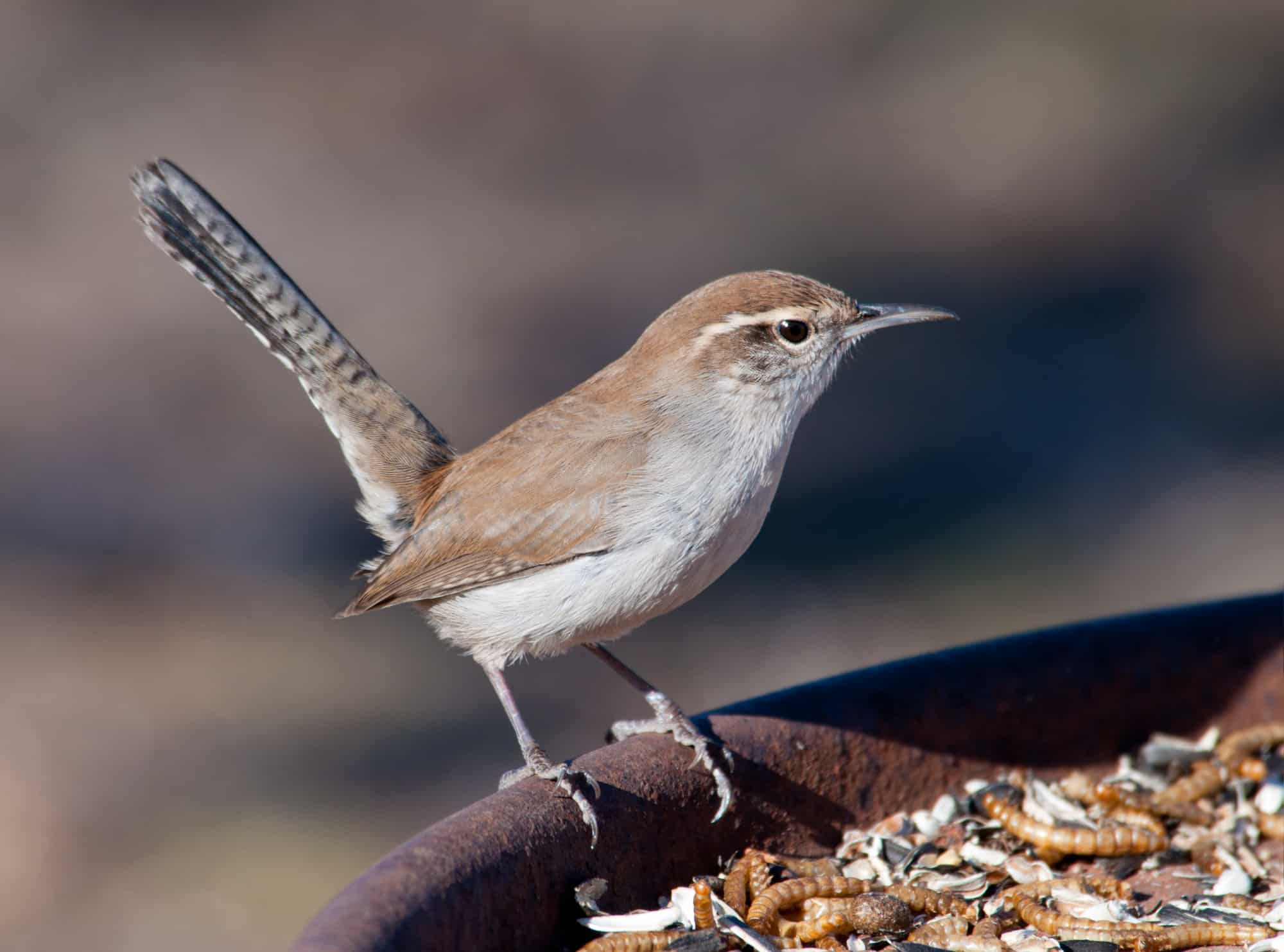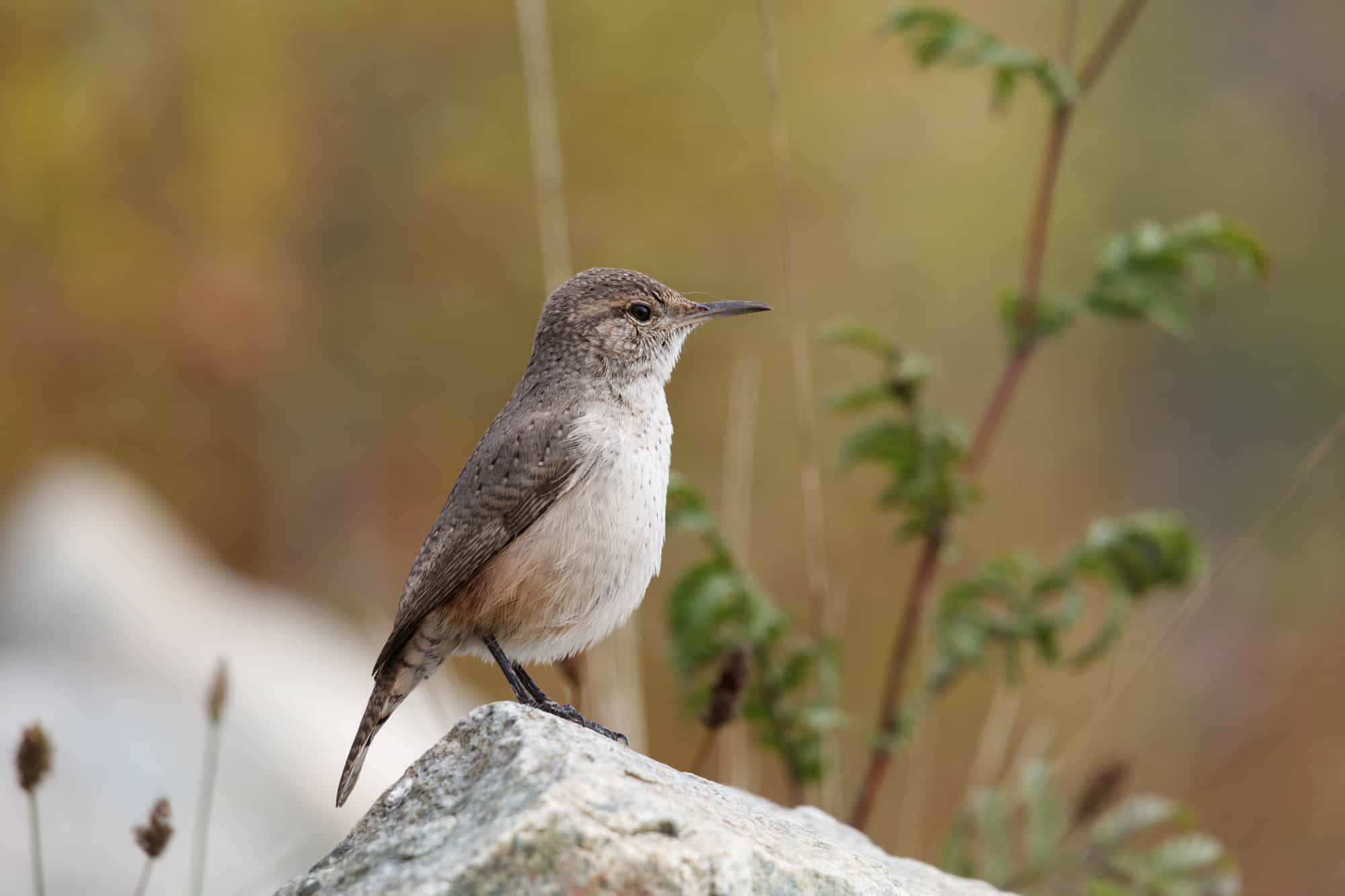With lakes, rivers, rolling hills, and hardwood forests, Missouri is renowned as a great destination for nature lovers. Its diverse landscapes and unspoiled ecosystems make it a haven for birds and bird watchers, too.
Of the 400+ bird species in Missouri, 7 of them are wrens. Although many of these species are fairly rare, the most common wrens can be seen in backyards every day – at least during the warmer months.
But before planning a trip to Missouri, remember that it has a strong continental climate. While a scorching 118°F has been recorded during the summer here, winter temperatures have been known to plummet to -40°F! These inhospitable conditions leave most wrens as purely summer visitors here.
If you’re a Missouri resident, the best way to attract wrens is by offering them a weedy corner of the garden with brush piles for them to forage for insects in. Not many wrens will visit bird feeders, but several will use suitable nestboxes in summer as well as in winter.
If you can guess all 7 wrens in Missouri without scrolling down, I’ll give you my biggest golden star! Otherwise, go ahead, and find out which members of this enchanting family can be found in the ‘Show Me State’.
Wrens in Missouri, Starting With the Most Common
Carolina Wren

- Scientific Name: Thryothorus ludovicianus
- Length: 4.7-5.5 in (12-14 cm)
- Weight: 0.6-0.8 oz (18-22 g)
- Wingspan: 8.9 in (29 cm)
The Carolina wren of the eastern states is by far the most common species in Missouri and is one of only two wrens that can be found here during the winter. Because these largish wrens don’t migrate, they’re seen throughout the state year-round, except in the coldest northwesternmost corner.
Carolina wrens are pretty birds with attractive orange flanks and ornate white eyebrows. Like most wrens, they have a loud song for their size – a series of high-pitched rolling phrases that you can use to identify them.
You can help Carolina wrens get through the cold Missouri winters by offering them a platform bird feeder or tube bird feeder. They enjoy eating suet, hulled sunflower seeds, and other fatty foods. Interestingly, they’ve also been known to prey on small animals like lizards!
Carolina wrens mate for life and are opportunistic nesters. They’ll sometimes use an appropriate nest box such as a gourd bird house – a delight for a bird-loving household!
House Wren

- Scientific Name: Troglodytes aedon
- Length: 4.3-5.1 in (11-13 cm)
- Weight: 0.3-0.4 oz (10-12 g)
- Wingspan: 5.9 in (15 cm)
The only other common wren of Missouri is the house wren. While they’re only seen during the warmer months here, they arrive in large numbers and are spotted by 17% of bird watchers during spring and summer breeding season.
House wrens are courageous little birds that will sometimes nest in garden sheds and nest boxes. They’re mainly insectivorous and are not attracted to backyard feeders, but you can help them find enough food by refraining from using pesticides in the garden.
These slender, gray, or brown birds tend to have fairly dull plumage, but the same couldn’t be said for their colorful song! Listen out for an energetic series of warbles, chatter, and trills coming from the undergrowth where they usually reside.
Of the thousands of birds that inhabit North and South America, the house wren has the largest distribution of them all. There’s hardly a region from Patagonia to Central Canada where these resourceful birds can’t be found at some time of the year!
Winter Wren

- Scientific Name: Troglodytes hiemalis
- Length: 3.1-4.7 in (8-12 cm)
- Weight: 0.3-0.4 oz (8-12 g)
- Wingspan: 4.7-6.3 in (12-16 cm)
A testament to their tough reputation, you’re only likely to see winter wrens in Missouri during the colder months. But because the state lies near the northern edge of their winter grounds, they’re only spotted by around 2% of bird watchers while they’re here.
Along with its western cousin, the Pacific wren, the winter wren has the shortest body length of all wrens in North America. Despite this, its stocky build makes it heavier than larger species like the skinnier house wren!
The winter wren has one of the most complex songs of all songbirds. Listen out for a long, forceful, and almost unbroken series of high-pitched trills and warbles.
Despite their booming voice, the winter wren is otherwise fairly secretive. It’s most often seen zipping through overgrown vegetation and brush piles, especially near water in damp woodlands and thickets.
Marsh Wren

- Scientific Name: Cistothorus palustris
- Length: 3.9-5.5 in (10-14 cm)
- Weight: 0.3-0.5 oz (9-14 g)
- Wingspan: 5.9 in (15 cm)
Apart from house wrens, marsh wrens are the only other wren that can be seen from the Atlantic to Pacific coasts. But because the majority of Missouri is purely a transit zone for these migratory birds, they only make it onto 1% of birdwatching records in summer.
It’s in the north of the state during the breeding season that you stand the best chance of seeing marsh wrens in Missouri, the southernmost region of their breeding grounds in the Midwest.
You’ll need a good pair of binoculars with you to peer into the wetland world that these birds nest in. Cattails and reeds with standing water beneath are their classic domain. During migration, however, they’re occasionally seen elsewhere.
Marsh wrens are small but mighty birds that will attack or even destroy the nests of their rivals! Their long buzzy song can last for 20 minutes and is sometimes sung right through the night!
Sedge Wren

- Scientific Name: Cistothorus stellaris
- Length: 3.9-4.7 in (10-12 cm)
- Weight: 0.3oz (7-10 g)
- Wingspan: 4.7-5.5 in (12-14 cm)
A smaller cousin of the marsh wren is the sedge wren. Interestingly, the two wren species share a very similar range in Missouri and are only seen in the upper third of the state during the breeding season.
Like marsh wrens, sedge wrens enjoy damp habitats. But unlike their boisterous relatives, they don’t require standing water and also sometimes nest in damp meadows with long grass.
These tiny birds tend to blend in perfectly with their grassy surroundings. Their barred wings make them highly camouflaged, and they often creep through vegetation rather than taking flight.
As with many wrens, your best chance of locating one is by listening. Their distinctive song consists of a series of clipped chips and rather tuneless trills but is broadcast with the same might and gusto that you’d expect from any member of this inspiring family.
Bewick’s Wren

- Scientific Name: Thryomanes bewickii
- Length: 5.1 in (13 cm)
- Weight: 0.3-0.4 oz (8-12 g)
- Wingspan: 7 in (17.8cm)
Although once more common, Bewick’s wren is now a rare resident wren in Missouri. They’re only regularly seen in the west of the state and are seen more frequently in summer when small numbers come to breed here.
Although they could be confused with a house wren or a Carolina wren from a distance there are some notable field marks. Bewick’s wren has a whiter underside than the other species and a heavily barred tail, with white tips in the corners.
Bewick’s wren’s song is difficult to learn because it varies a lot according to the locality. In the Midwest, they tend to sing a complex musical trill, somewhat resembling a song sparrow.
Rock Wren

- Scientific Name: Salpinctes obsoletus
- Length: 4.9-5.9 in (12.5-15 cm)
- Weight: 0.5-0.6 oz (15-18 g)
- Wingspan: 8.7-9.4 in (22-24 cm)
Rock wrens are one of the rarer wrens in the United States and are only normally seen in the western half of the country. They only show up every few years in Missouri, so can be treated as vagrants.
True to their name, these energetic birds prefer arid, rocky habitats to grasslands and forests. They use their long bills to excavate crevices for insects and other invertebrates from the rocks.
The rock wren is larger than most wrens, being similar in size to the Carolina wren. It’s also paler than other wrens, with an attractive light chalky underside.
Rock wrens have the lovely habit of bouncing up and down on a rock as they sing their jumbled, mechanical song.
Conclusion
There are 7 species of wren in Missouri, and most of them are only seen here during the warmer months.
Whether you’re enjoying watching a winter wren vigorously foraging in a forest or trying to spot the elusive sedge wren in a grassy meadow, Missouri offers plenty of opportunities to observe these characterful birds.
It’s not just about wrens in Missouri, though! Come with us as we explore 28 of the most fascinating birds of the ‘Show Me State’.

